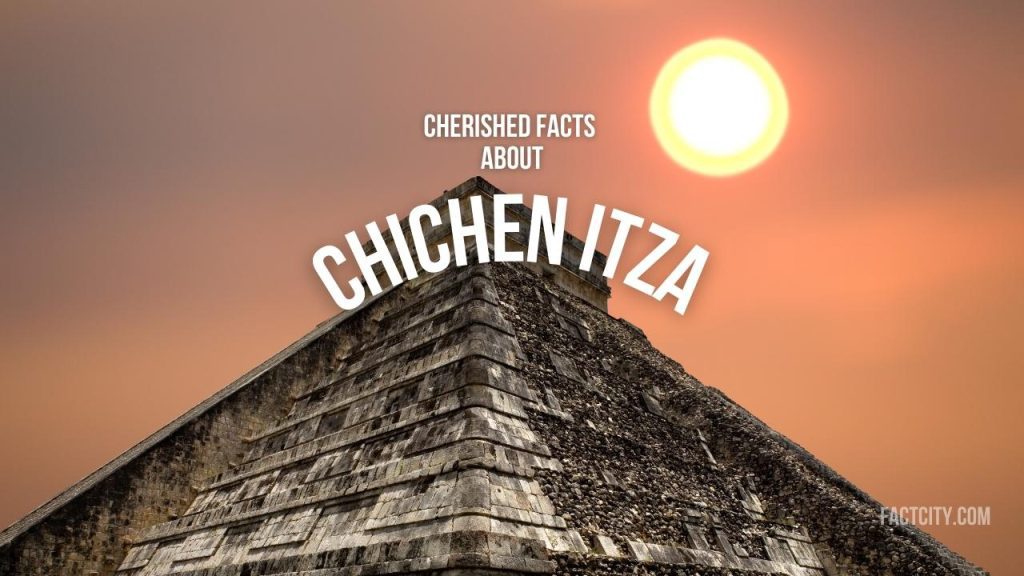If you have ever shown an interest in Mayan culture, then chances are that you have already heard of Chichen-Itza. It is one of the most important and ancient relics we have remaining from ancient Mayan civilizations, and it’s considered one of several wonders of the world. Here are some fun facts about Chechen-Itza you’ll want to remember!
1. It was once the epicentre of religion and politics for the Mayans.
Chichen Itza was known for being one of the most important cities of the Maya civilization. It reached its peak between the 9th and 12th centuries AD when the region served as a major centre for religious, economic, and political activities in the Maya world.
2. Its name refers to its original tribe-dwellers and its location.
The name “Chichen Itza” roughly translates from the Maya words to mean “Chi” (mouth), “chen” (well), and “Itza” (the name of the Maya tribe that inhabited the area). Together, it translates to “at the mouth of the well of the Itza.”
3. It’s less than two miles square.
The site covers an area of approximately five square kilometres (1.9 square miles). To this day, it contains well-preserved structures, including pyramids, temples, ballcourts, and other ceremonial buildings.
4. It’s home to El Castillo, one of the world’s most famous pyramids.
The Kukulkan Pyramid, also known as El Castillo, is the most famous structure in Chichen Itza. It is a step pyramid with 91 steps on each of its four sides, and when combined with the top platform, it totals 365 steps, representing the days of the solar year.
5. El Castillo was designed with equinoxes and movements in the sky in mind.
The pyramid was designed with precise astronomical alignments. Amid the spring and fall equinoxes, a shadow is said to appear on the pyramid resembling a serpent slithering down the stairs, known as the “serpent effect.”
6. Chichen Itza was well-populated until, mysteriously, civilization vanished here by the 1600s.
Chichen Itza was abandoned by the Maya around the 15th century. To this day, its exact reasons for abandonment remain a subject of archaeological debate.
7. Europeans first discovered the area around a century after its abandonment.
Chichen Itza was rediscovered by Spanish conquistadors in the 16th century. However, major archaeological excavations did not begin until the late 19th and early 20th centuries. Much of our knowledge about the site has pulled together over the past 200 to 300 years.
8. UNESCO recognises it as a heritage site.
In 1988, Chichen Itza was designated a UNESCO World Heritage Site, recognizing its cultural and historical significance. That same year, the Tower of London (UK) and the ancient city of Rhodes (Greece) received the same accolades as part of UNESCO’s “12th session.”
9. There’s evidence that people played sports here – it’s home to Mesoamerica’s best-preserved ballcourt.
The Great Ballcourt of Chichen Itza is the largest and most well-preserved ballcourt in Mesoamerica. It measures 168 metres (551 feet) long and 70 metres (230 feet) wide. The Maya ballgame played in the ballcourts like the one at Chichen Itza, was a ritualistic and sometimes deadly sport with significant religious importance.
10. It remains one of Mexico’s most important landmarks.
Chichen Itza is one of Mexico’s most-visited archaeological sites and remains an important landmark. It offers visitors a rare glimpse into the ancient world of the Maya civilization, and is said to welcome more than two million tourists each year.
FAQs about Chichén Itzá
What is so special about Chichen Itza?
Chichen Itza is special because it is the home to remnants of the Mayan culture, including relics that have withstood centuries! What's more, despite the remnants and relics left behind, archaeologists still don't have the full answers as to why people abandoned the area, or what else the Mayans were hiding here.
What’s inside Chichen Itza?
Inside Chichen Itza, you’ll find El Castillo, a pyramid of 365 steps. However, there is also another pyramid temple nestled within the larger pyramid – this hidden structure has nine platforms, a single stairway, a jade-studded jaguar throne, a so-called Chac Mool, and… human remains.
Can you climb Chichen Itza?
No, you cannot climb Chichen Itza. It has been illegal to climb its stairs since 2008 due to concerns about the safety of those climbing and the potential damage to the ancient structures themselves.
Further reading:
https://facts.uk/tag/UNESCO
https://www.chichenitza.com/
https://whc.unesco.org/en/list/483/
Do you know any fun facts about Chichen Itza? Share them in the comments below!
